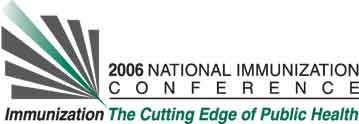Hubert A. Allen1, Anne Lutz
2, Cynthia Rawn
3, Steven Nickell, and Denise Ortiz
4. (1) Consultant to NMDOH/Immunization Program, Hubert Allen and Associates, 720-25 Tramway Lane, NE, Albuquerque, NM, USA, (2) NIP/ISD/POB Field Staff, CDC, New Mexico Department of Health, 1190 St. Francis Drive S-1261, Santa Fe, NM, USA, (3) NM Immunization Program, New Mexico Department of Health, Santa Fe, NM, (4) SWVPHO, New Mexico Department of Health, 2001 Centro Familiar SW, Albuquerque, NM
Learning Objectives for this Presentation:
By the end of the presentation participants will understand:
1. A simple approach to evaluating interventions which support their State Immunization Program.
2. Be able to design a prospective evaluation.
3. Will be able to use multiple statistical approaches to gain a comprehensive evaluation of interventions.
Background:
Increasing immunization coverage rates of small children at a state or national level requires active interventions in order to raise rates to national goals (e.g.. 90% covered by age two for the 4DTaP:3IPV:1MMR:3Hib:3HepB combination). Recently the New Mexico Immunization Program has actively supported the state's medical practices with targeted intervention which require evaluation.
Setting:
New Mexico is large state (5th nationally) but sparsely populated (ranked 36th in 2000) except for a handful of metropolitan areas.
Population:
Historically, New Mexico has had high poverty levels and low immunization coverage rates.
Project Description:
New Mexico has deployed a range of interventions intended to support its medical practices in their immunization practices. One example includes sending a small team of nurse experts into a practice for a short time to develop systems, the “Shots On Time” Project. This poster presents details of its evaluation.
Results/Lessons Learned:
Evaluation uses multiple key statistics collected over time: the 4:3:1:3:3 rate, ranking in the annual list of clinics with annual data, and the level of systems improvement and maintenance over time. Each clinic has a baseline and is tracked over three years. Simple matched-pairs t-test of the
baseline and post-value is presented. Other comparisons include the intervention group versus all other clinics at the baseline year. Additionally, clinics were matched against other clinics with a similar baseline in case-control fashion. Process indicators include a running tally of new systems
adopted by practices. Evaluation results suggests the “Shots on Time” intervention as effective at increasing immunization coverage rates.
See more of Posters
See more of The 40th National Immunization Conference (NIC)

